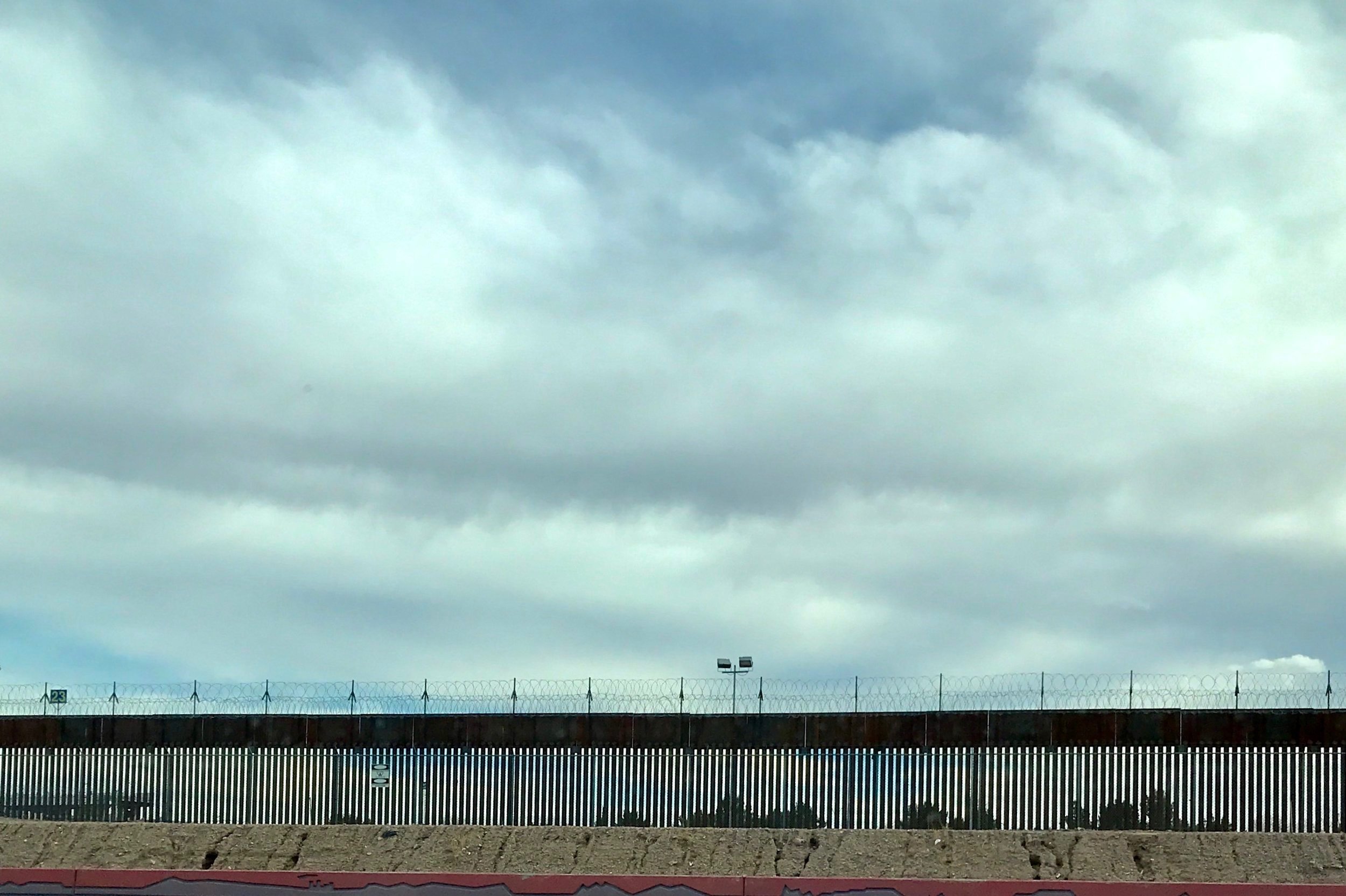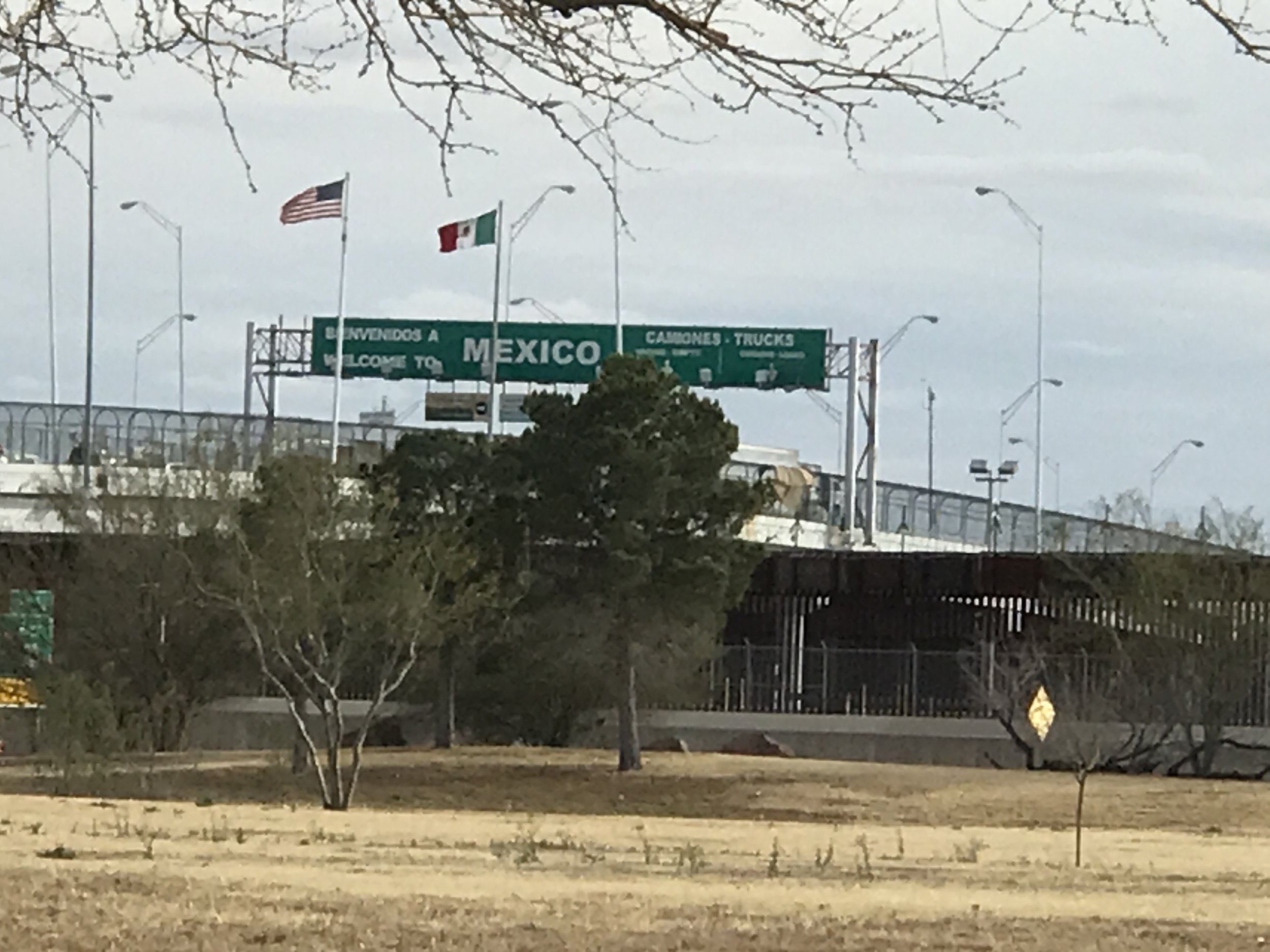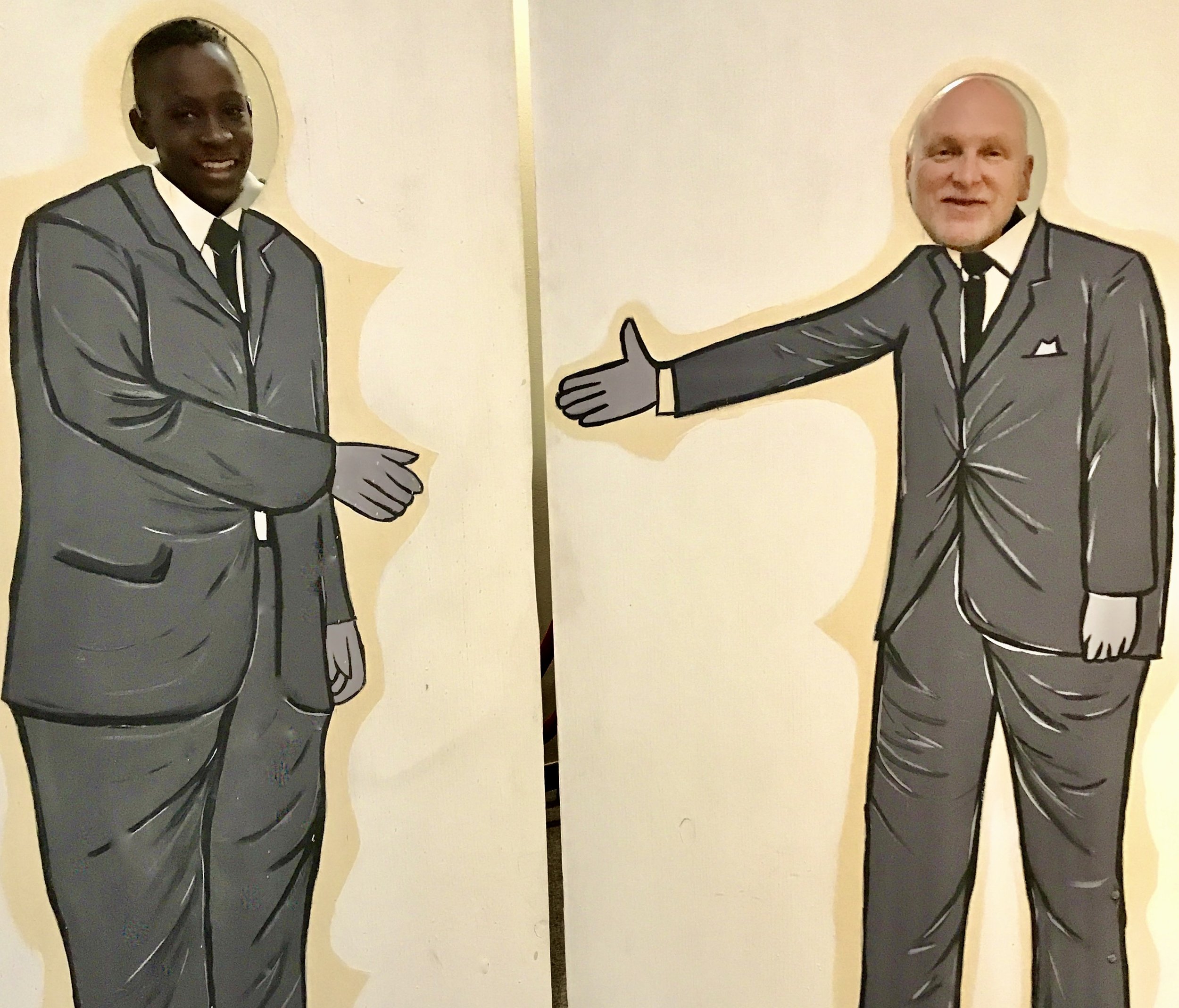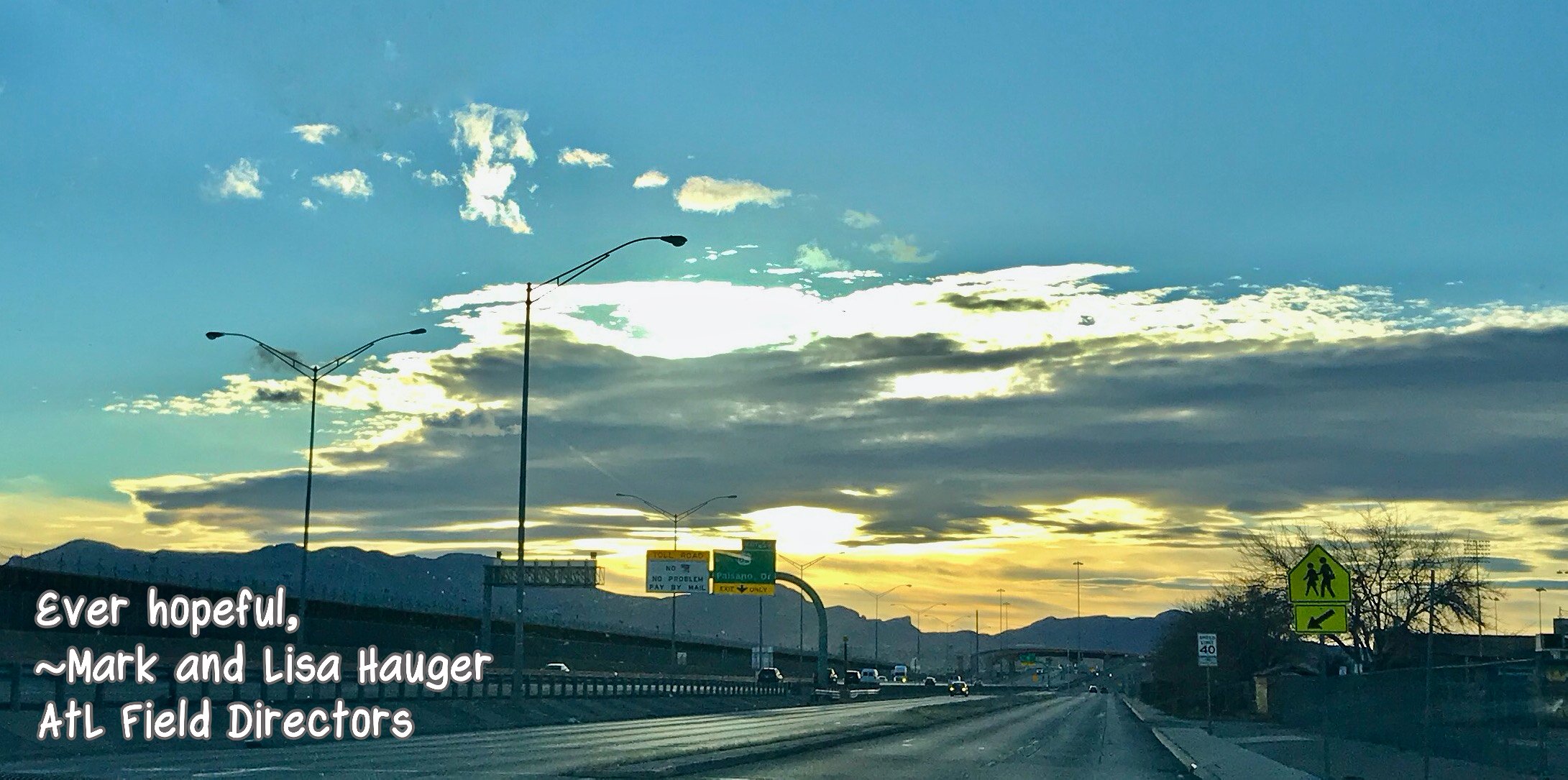Above are photos of the 131 miles of fence separating El Paso sector from Ciudad Juarez, an El Paso border crossing, a 48 hour-stay Migrant Center in Las Cruses.
Our exploratory trip to the Southwest border showed contrasting consequences of a humanitarian crisis. To be present with people fleeing severe persecution, alongside those trying to escape economic tragedies felt like a divine dance between suffering and meaningful hope. Both groups carried personal stories in their eyes, postures and expectations. We witnessed the aftermath of families traveling for months through hard terrain with all their possessions in torn backpacks, leaving home countries searching for dreams of restoration. Most were turned away at the border because economic hardship does not qualify to claim asylum. Others endured long interviews by Customs and Border Patrol, reliving the hell that got them here.
The US has always been viewed as a land of opportunity, a place to start building something new. It’s the reason many continue the journey through other countries that look like theirs to a place they believe will be the best. Unfortunately, US immigration policies regularly change based on prejudice and profit. No migrants receive admission into the USA unless they meet narrow, restricted eligibility requirements based on how they approach the border. There are only three legal ways in:
Receiving the rare highly sought after and extremely expensive business investor/special employee permit.
Securing a multi-entry visa, which is not possible in countries without strong diplomatic ties to US.
Claiming asylum that must be confirmed by a lengthy credible fear check, then continuing through a rigorous application process in a defensive court of law. There are no social benefits unless that applicant receives a grant of asylum which takes years. They are not legally allowed to work for 6 months after USCIS sends receipt of their applications.
No one’s approach is exactly the same or fits neatly into any box of qualifications.
We spent time between El Paso’s processing center, the surrounding area and Las Cruces Migrant Center. We met with directors of programs that assist with basic needs of food, water, shelter and clothing. There were also ministries serving as legal counsel - explaining the procedure of applying for Asylum. Some might take different permitted paths like Humanitarian Parole or Conventions Against Torture (CAT) or Trafficking Victim. The lengthy intake questionnaires for each applicant determines which path made the most sense to preserve safety. Common inquiries were:
What is the evidence of persecution?
Is it available?
Does it qualify under immigration law?
Again, families told their trauma-driven tales with watery eyes and strained faces.
Regardless of the harsh difficulties, God orchestrated His love in beautiful ways. One afternoon when we stopped for gas, a young man came to our vehicle and tried washing our windows with a dirty, dry rag. Across the palm of his right stretched a deep wound the looked hastily stitched with black thread. It was also dirty. We tried communicating - listening to Holy Spirit and him as quick words tumbled out anxiously, “Johnathan… Columbia… work…” We found antibiotic cream and bandages in our first-aid kit while thinking of how to get Johnathan food. Suddenly the manager of the station came out and handed us complementary sandwich coupons. We showed Johnathan how to use them. Our next thought was to get some window cleaner so he could receive donations for actually cleaning windows; and as if our thoughts were heard on high, a man showed up and gave Johnathan a large bottle of Windex. None of this was planned. It unfolded spontaneously, like God was gifting people to meet Johnathan’s needs so he could take the small steps towards self-sustainability. He prayed with us before hurrying off the wipe more windows; this time, equipped for the task. God makes kindness contagious.
The Center in Las Cruces was an old school in a run-down neighborhood with barbed-wire wrapped around the top of the tarp-covered fence surrounding the property. A security guard stopped us, asked for ID, and why we were there. “To volunteer,” Mark replied, and the guard radioed the manager for conformation. The building’s entrance opened into an elementary school size cafeteria with 11 long tables lined with families on both sides of each one. Some plump white faces wore colorful head scarves. Others had olive-colored skin draped in woven head coverings, more were varying shades of chocolate hues and braided hair. It looked like the United Nations lunch room, but packed with more countries than the area could hold. A huge American flag adorned the far-left corner. A map of the states covered part of a wall that led to classrooms which doubled as sleeping spaces, medical assistance, play areas and storage space. There still didn’t seem to be enough room to hold people for the allotted 48 hours - time given for them to make travel arrangements to family or sponsors.
We went straight to work among volunteers and migrants alike. Mark and Henry built shelves. I divided packages of wet ones, assembling enough to go around. I watched interactions and smiled at those who were watching me. The brave or curious greeted me with passable English, and we exchanged information about home countries, destination states and blessings for the continued journeys. After hours serving at the Center, we took our tired selves, and our unanswerable questions back to the hotel to rest. Later that evening, I texted the migrant center manager to ask, “What is the greatest need?” “Clothes for 2T up to size 6,” was her quick reply. A plan emerged for the next day.
After breakfast, we navigated to the nearest Good Will and took stock of their inventory. Henry found the most clothes in quality condition. We organized outfits of warm sweatshirts and matching pants. Our bill kept growing as we collected cozy clothing for kids who crossed over the border with nothing extra to cover their little bodies. As we pushed the cart to check out, we whispered a prayer for favor. The checkout gal gave us just that - favor with prices and a teacher discount because at one time, I was a teacher and she said, “That counts!” We carried the donation to a church for washing and delivery to the parents. Our small part fed into a bigger vision of empathetic welcome that believes each person shares God’s design - made in His image.
This series of photos are another El Paso border crossing - one way back to Mexico, Sacred Heart Church receiving people, gathering clothes for children, a visit to Chamizal National Monument along the Rio Grande, sunset in Las Cruces.
Unfortunately, welcoming the foreigner has become an issue for a political boxing ring. Words like: “illegals, encounters, apprehensions, invasions, deportations” are thrown like punches that knocks out our sense of humanity. Yes, there are people crossing our borders illegally, some with ill-intentions, but the few shouldn’t outweigh the majority who truly qualify to seek asylum. It may behoove us to read and understand the biblical basis for Christ-like compassion about embracing strangers in our midst. Loving our neighbor is the Bible’s most repeated command. It would profit all of us to practice it.
Practical ideas:
1. Read the many verses and bible stories about migration and pray for Holy Spirit to show you truth.
2. Pray for those fleeing persecution and for organizations working with asylum seekers and refugees.
3. Find out what is actually happening at our southwestern border and the global phenomena of displaced people, from well-rounded organizations like World Relief and Border Perspectives. Be sure your source doesn’t have underlying biases like population control, euthanasia, universal abortion or the Great Replacement - all current cultural conspiracies.
4. Ask questions from people with on the ground experience, and then ask God if you play a part loving your neighbor like the good Samaritan, which is akin to loving God.
5. If you feel a tug to get involved, reach out to Among the Least for information and opportunities.













